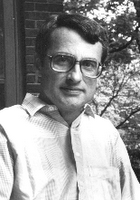 NOB HILL--This is not a tough luck story. This is a report on the state of Love in our streets.
NOB HILL--This is not a tough luck story. This is a report on the state of Love in our streets.I have known Robert Goodluck for maybe 8 years, not intimately, but well enough that whenever I bought a smudge stick from him I asked for a blessing with it. He always obliged. He always brought me luck--not 'casino' luck, but a sort of spiritual luck that lets my soul drift into better places and calmer waters.
Robert hasn't been around for a while. He and his parner Johanna have been staying with family over near Gibson Blvd., but something happened and now the two of them are on the street again. They were selling sage sticks on Central Ave. trying to get enough for a room. I bought one...well actually I just gave them a couple bucks and didn't take a sage stick. After all, what I really needed was the blessing.
They told me of being at the Indian Market in Santa Fe, and their camp near the Villa L
 inda Mall. One night the police came and held them at gunpoint while they knelt in the darkness. The police, it seems, had a report of shots being fired and were looking for the shooters. Eventually the police went away.
inda Mall. One night the police came and held them at gunpoint while they knelt in the darkness. The police, it seems, had a report of shots being fired and were looking for the shooters. Eventually the police went away.But, all in all, this is the best Robert has looked since I have known him. Johanna too. They talked about how good people have been to them and their recent blessing by a Pipe Carrier. Johanna keeps them doing the little things that make life better--like replacing lost documents. Robert has that kind of dangerous sensitivity that many artists share...that ability to reach into his own soul for images. But this gift is not totally positive. This opening up of one's insides makes him vulnerable to bouts of sadness and se
 lf-medication. But not this time. I think Johanna keeps him focused on the better life.
lf-medication. But not this time. I think Johanna keeps him focused on the better life.I have been told that Robert has work in the Heard Museum. He is listed on AskArt. I do know that he in an Icon here in Nob Hill. Wouldn't it be great if a little of that "One Percent for the Arts" money found its way into his hands? Wouldn't it be great if something of his were displayed right here in Nob Hill?


















